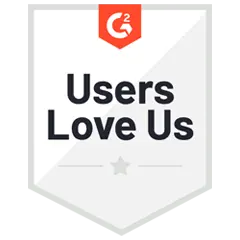What the Great Singapore Sale’s Turnaround Can Teach B2B Marketers
In 2017, the annual Great Singapore Sale (GSS) snapped out of a three-year slump as retail revenues slightly picked up during the June-August period. Billed as a success, last year’s GSS owed much of its strong performance to digital channels playing a more crucial role in creating buzz and engagement for the months-long event.
There’s, of course, more to this improvement than the surprising uptick in retail sales. The 2017 Great Singapore Sale shows us how the right use of digital marketing strategies can make or break results, and the lessons go beyond the B2C space. The shopping event also provides plenty of key learning points for B2B marketers to take to heart. That’s what we’ll dive into in this post.
Why should B2B folks pay attention to B2C retail?
First, let’s take a closer look at the case for providing a B2C-like buying journey to a B2B audience. The consumerization of the B2B buying experience means that business buyers now behave a lot like retail shoppers at important points along their paths to purchase.
Much of this shift boils down to the changing B2B buyer profile which, according to Think With Google, is evident in the following trends:
- B2B buyers are getting younger (Nearly half of B2B researchers are 18-34 years old).
- Purchase decisions are becoming more decentralized (81% of non-C-suite employees influence B2B purchases, while 24% of non-C-suiters have the final say).
- B2B researchers rely on traditionally B2C-oriented tools throughout the purchase process (90% use search engines; 42% use a mobile device; 70% watch videos throughout their buying journey).
As a result, writes Brian Gladstein, B2B buyers now resemble consumers in terms of how they go about with their purchases (even for complex products/services):
- They talk to peers.
- They look for unbiased recommendations.
- They connect with people in the same situation as they’re in.
- They first get a feel for a vendor.
- They try before they buy.
- They can turn into your biggest fan or your worst critic.
Related: How Coke Beats Pepsi: Top-Of-Mind-Awareness in Marketing
What can B2B marketers learn from the GSS?
The GSS turnaround story holds some valuable lessons for B2B marketers to better adapt to the changing buyer landscape. That’s because the shopping event was able to finally put together a digital strategy (something that it didn’t previously have) that helped it reverse years of subpar performance.
During its heyday, before the advent of digital ecommerce, the Great Singapore Sale attracted scores of domestic and foreign consumers as local stores, malls, and hotels offered steep discounts and deals, making the event the highlight of Singapore’s shopping season.
But with the rise of online retail, the (mainly) brick-and-mortar shopping event struggled to maintain a healthy pace of sales growth. In 2016, the GSS recorded its third consecutive year of sales declines, leaving many industry watchers to call the shopping event’s future into question.
In response, the event’s organizer, the Singapore Retailers Association (SRA), promptly refined their digital strategy and rolled out a number of digital marketing initiatives (including the GoSpree app) to promote the 2017 GSS.
The new strategy saw very promising results. Retail sales during the nine-week period (from June to August) rose by 4.1% compared to the same period in 2016, and was the biggest recorded increase since 2012.
The SRA credited much of last year’s GSS success to the GoSpree app, which recorded more than 34,000 downloads and showcased exclusive deals from over 200 participating brands. The app essentially remade the GSS and drove a huge chunk of shopper traffic into physical stores.
Here’s a few lessons to pick up from the GSS’s turnaround:
1. Sell the way your customers buy
With 60% of consumers making at least one online purchase each month, Singapore currently has the highest online spending per capita in Southeast Asia. It’s clear that this trend played a huge role in the GSS’s decline, since the shopping event mainly includes brick-and-mortar stores.
But with its new digital focus, the GSS is clearly taking a step in the right direction, embracing tools that enable (instead of competing with) the way its target audience actually makes their purchase.
Related: 5 Hyperlocal Marketing Tips for Singaporean Businesses
2. Invest in the customer experience
Here’s some useful advice according to Gartner. As digitally-savvy customers continue making smarter buying choices through self-guided research and peer recommendations, the challenge for marketers now shifts toward capturing a longer section of the purchase process (for both B2B and B2C customers). This means making the buying experience as smooth and consistent as possible.
That’s exactly what the new GSS digital marketing initiative set out to accomplish with the GoSpree app. The app is the digital hub for all GSS-related offers, deals, attractions, etc., making the entire shopping event available to customers on a single platform.
Related: B2B Marketers’ Love-Hate Relationship With Marketing Technology
3. Always be connecting (ABC)
Another important reason why the GSS encountered a prolonged sales slump was the event’s late adoption of a GSS-focused mobile platform. It was only last year that the GSS finally established a visible mobile presence with its GoSpree app.
Reaching out and engaging your target customers in different channels help ensure that you connect with your audience where they are. This is especially true in today’s buying landscape where potential customers interact with a vendor via 6 different channels on average.
Related: Ways to Optimize Your Marketing List For Your Multi-Channel Campaigns
Conclusion: At the time of writing, the Great Singapore Sale 2018 is in full swing, and it’s easy to see that the shopping event has learned from its experience and expanded on its lessons. Now that business customers start to look like consumers, B2B marketers need to take some cues from their B2C counterparts.
With 14+ years of experience helping Singapore companies exceed their revenue and growth targets, Callbox knows what works and what doesn’t when it comes to sales lead generation and booking qualified sales meetings. Talk to us today and find out how we can apply these valuable lessons to your current marketing initiatives.


















